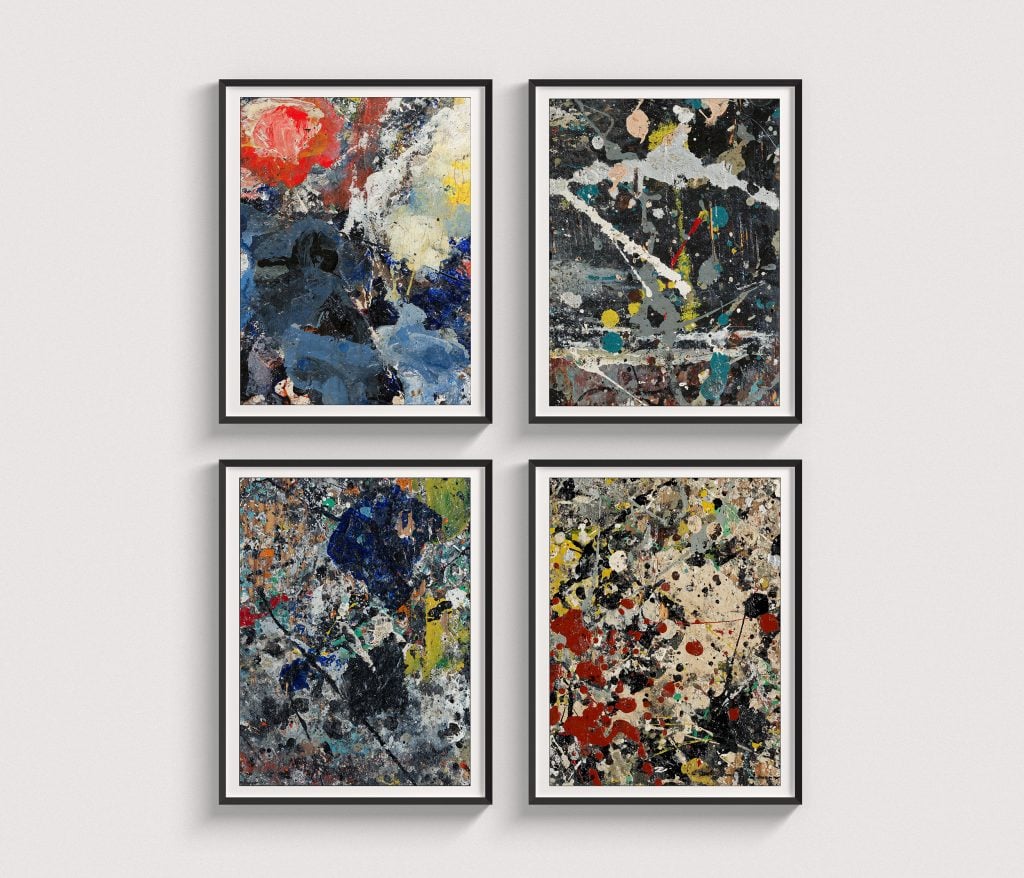NFTs
The Jackson Pollock Studio’s First NFT Collection Sold Out in Mere Hours, Raking in More Than $450,000
One of the NFTs minted out in 32 minutes.

One of the NFTs minted out in 32 minutes.

Min Chen

Not three hours after the mint commenced for the Jackson Pollock Studio’s first NFT collection on July 19, the digital artifacts were snapped up entirely, raking in more than $450,000 in transactions.
Titled “Beyond the Edge,” the series released by the studio in partnership with Web3 platform Iconic offered collectors four individual NFTs, featuring Pollock’s paint-stained studio floor, in editions of 100, plus a set of all four NFTs in an edition of 25. Priced at .8 ETH or $1,500 each, the NFTs come bundled with hand-numbered museum-quality prints.
Within a two-and-a-half hour window, 440 of these phygital pairs were sold, with one of the NFTs, Convergence, minting out in a mere 32 minutes. The remaining 60 digital artifacts and limited-edition prints have been reserved for an online sale, open today, targeted at a more traditional collecting audience.
Convergence from “Beyond The Edge,” Jackson Pollock Studio Collection (2023). Courtesy of Iconic.
“The moment I saw Pollock’s studio floor, I knew that we could create a groundbreaking digital artifact release that collectors would love,” Chris Cummings, founder and CEO of Iconic, told Artnet News. “But to see it play out before your eyes is something very moving. I’m overwhelmed by the momentum around the project and the support we’ve experienced for the collection.”
According to data supplied by Iconic, the buyers were located across 25 countries, among whom was NFT mega-collector Pranksy, who purchased all four NFTs.
Sold out! https://t.co/fdQx9CCEKj
— Pranksy 📦 (@pranksy) July 19, 2023
The collection, which marks Pollock’s entry onto the blockchain, is centered on the floor of the Abstract Expressionist’s studio, on which he painted his canvases using his famed drip technique. Preserved by the Jackson Pollock Studio, the surface still bears remnants of his creative process and traces from his work on paintings such as Number 3, 1950 (1950) and Blue Poles: Number 11, 1952 (1952).
“The floor is our major artifact,” said Helen A. Harrison, the director of the Jackson Pollock Studio, ahead of the drop, adding that offering NFTs based on that floor enabled “a way of relating the artifact to the art.”
Following this first release, the collection will expand in August to include Ordinals, likewise centered on the studio floor, as well as artworks created by three digital artists. Proceeds from the sale of “Beyond the Edge” will directly benefit the Jackson Pollock Studio’s ongoing conservation efforts.
“People said Pollock’s work was not art. People said digital NFT art is not art,” Harrison told Artnet News about the sold-out collection. “21st-century irony is alive and well.”
More Trending Stories:
Influencers Are Realizing That A.I. Might Not Be a Magic Money-Making Machine For Artists After All